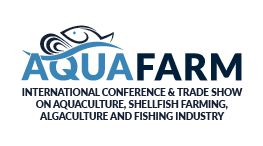Combating jellyfish blooms with Mowi Scotland’s new technologies
This article was featured in Eurofish Magazine 4 2025.
Mowi’s salmon farming operations in Scotland have benefited from introducing and adapting a technology against jellyfish that has proven effective at the company’s farm sites in other parts of the world.
Jellyfish blooms are not a new phenomenon in Scottish waters. These events, while historically episodic, are becoming increasingly frequent and severe. The escalation has been linked to broader patterns of climate variability and ocean warming by marine scientists. Although Scotland’s average sea temperature has not risen dramatically across all seasons, localized thermal spikes of up to 1.5°C in particular regions and during certain times of the year have had significant ecological impacts. These -subtle but consequential increases in sea temperature appear to be creating ideal conditions for the proliferation of jellyfish and phytoplankton.
This variation in marine conditions has introduced a new and urgent layer of complexity for aquaculture operators. Jellyfish blooms are now widely recognized not just as seasonal issues, but as chronic, high-risk phenomena that can damage farm infrastructure, compromise fish health, and significantly disrupt production cycles. Farms located in sheltered inlets or fjords, where circulation is slower, are at greater risk of bloom accumulation. Among those at the forefront of mitigation efforts is Mowi Scotland, which has taken decisive steps to integrate advanced monitoring systems and technological interventions into its farm management practices. One of the most promising innovations trialled in recent years is the bubble curtain—a hydrodynamic barrier designed to keep harmful organisms from entering salmon pens. These systems have been deployed at two distinctly different Mowi sites: Portnalong, a sheltered farm with high jellyfish retention, and Stulaigh, an exposed farm influenced by tidal flows. Drawing upon global expertise from operations in Chile and Canada, Mowi has implemented these systems as part of a wider, adaptive strategy to protect stock and maintain performance under increasingly volatile conditions.
Jellyfish blooms and fish welfare have complex linkages
The threat jellyfish pose to aquaculture is both multifaceted and poorly understood. Their effects are not limited to visible blooms of large species. In fact, the most dangerous offenders are often microscopic jellyfish whose presence is not obvious without detailed sampling. Even at low densities, these jellyfish can deliver significant harm through mechanisms that include oxygen depletion, toxin exposure, and physical gill damage. At night, blooms can rapidly reduce dissolved oxygen levels in the water column, creating environmental stress that weakens salmon immune responses and increases mortality risk. Even more concerning, jellyfish possess stinging cells—nematocysts—which they release upon contact. These microscopic structures act like harpoons, injecting toxins into the gill tissues of the salmon. The result is a cascade of health issues: inflammation, impaired respiration, secondary infections, and in some cases, death.
Although salmon themselves are resilient to slight increases in temperature, it is the indirect effects of these warming patterns—i.e., increased bloom activity—that prove most harmful. The blooms are difficult to anticipate and may vary not just by season, but also by site, depending on current, nutrient availability, and other -localised -oceanographic characteristics. To address this complexity, Mowi Scotland has instituted a comprehensive monitoring protocol. Across its farms, trained staff conduct daily inspections, measuring water temperature, oxygen saturation, and performing microscopic analysis of water samples taken at various depths and pen locations. Although full automation remains a future goal, Mowi continues to invest in R&D efforts to develop AI-driven identification systems that could eventually replace manual monitoring with real-time digital tools. Until that time, frontline mitigation relies on the experience and responsiveness of farm personnel.
Bubble curtain principles and site adaptation
The principle behind bubble curtain technology is simple but effective. The system releases a continuous stream of bubbles, typically from aeration tubing or specialised diffusers placed at depth. These bubbles rise vertically, creating an upward current of oxygenated water that displaces surface layers, where jellyfish, plankton, and other undesirable organisms tend to accumulate. At Portnalong, a site historically plagued by persistent jellyfish and phytoplankton blooms, a bubble curtain system was installed using a technology known as Bubble Tubing®. The setup creates a moving barrier around the salmon enclosures, redirecting biologically loaded water away from the pens. The location’s sheltered nature made it ideal for this type of system, which requires stable conditions to operate efficiently.
In contrast, at Stulaigh, where exposure to currents and swell is more pronounced, a Tight Microbubble Screen (TMS) system was deployed. Installed at 25 metres, the TMS forms a fine mesh of rising microbubbles that acts like a vertical fence. This barrier is designed to block or slow the -intrusion of -micro-jellyfish, phytoplankton, and other harmful agents. Notably, the system may also have benefits beyond biological control, potentially intercepting hydrocarbon residues or suspended contaminants. These installations reflect the need for site-specific adaptation. A solution that works well in a calm fjord may be ineffective in exposed waters. Mowi’s comparative trials have provided a deeper understanding of how these systems respond to different hydrodynamic settings, informing future deployment strategies.
Portnalong site, a – case-study in bubble curtain efficacy
Few examples illustrate better the impact of bubble curtain systems than recent results from Portnalong. Previously, this site had been so saturated by jellyfish and plankton that Mowi was forced to relocate entire salmon generations to alternative farms, sacrificing growth performance and increasing operational complexity. However, the tide turned in 2024, when for the first time in three years, salmon were successfully grown and harvested on site. Even more significantly, the harvested fish were rated superior grade, suggesting that not only did the fish survive the bloom season, but they thrived within it. Daily monitoring confirmed the effectiveness of the system. Enhanced sampling both inside and outside the bubble curtain zone show that, for many days, the presence of jellyfish and plankton inside the curtain was up to 80% lower than outside. While variability existed, the overall trend demonstrated consistently lower biological pressure within the protected area.
The system operated around the clock, requiring specific training for staff to manage its components. Power demands were considerable, particularly due to the continuous 24-hour -operation. Yet the trade-off was clear: stable fish health, reduced mortality, and the suspension of emergency transfers. This success has prompted further interest in evaluating the long-term return on investment. Though energy costs are high, manufacturers are already developing next-generation systems with improved energy efficiency, making wider adoption increasingly viable.
Bubble technology is one tool in a comprehensive management strategy
Bubble curtain technology does not offer a one-size-fits-all solution, nor should it be viewed as a standalone fix. However, it has become an important pillar in Mowi Scotland’s broader environmental management framework. Alongside routine sampling, environmental forecasting, aeration systems, and stock movement strategies, the curtain technology has helped reduce losses and improve fish welfare outcomes. The figures from 2024 are telling. Biomass mortality across all Mowi’s Scottish seawater farms declined by 35%, while fish-by-fish mortality dropped by 45%. Although attributing all this improvement to bubble curtains would oversimplify a complex system, they played a critical role, particularly at high-risk sites.

Bubble curtains are one component in an environmental management strategy,
that includes routine sampling, and stock movement plans, to reduce mortalities and improve fish welfare.
However, challenges remain. Operating costs must be balanced against benefits. Micro-jellyfish detection- continues to rely heavily on manual -sampling, and climate-induced variability makes planning difficult. Despite this, Mowi sees value in maintaining a multi-layered approach, combining data collection, staff expertise, and site-adapted technologies to build resilience against biological threats. One of the strengths behind Mowi’s strategy has been its ability to draw on international experience. Before installing the bubble curtain systems in Scotland, Scottish farm managers consulted with counterparts in Chile and Canada, both of which have faced similar bloom-related challenges.
Climate change underscores the need for collaboration across geographies
Once the systems were in place, a delegation from Mowi Norway visited the Portnalong site to observe the technology in action. These visits not only enabled firsthand evaluation but also reinforced a culture of internal knowledge transfer, allowing successful strategies to be replicated and refined across regions. Cross-border discussions helped inform system selection, site -adaptation, and operational protocols. This spirit of collaboration is increasingly important as climate change drives shared challenges across aquaculture geographies. Whether in northern fjords or southern bays, the common thread is a need for adaptable, science-based tools—and the willingness to learn from one another’s -successes and failures. The story of bubble curtains at Mowi Scotland is still evolving. Plans are already underway to continue their use at Portnalong and Stulaigh in 2025, and new sites are being assessed for potential deployment. Meanwhile, internal teams are working with suppliers to enhance system design, reduce energy demand, and -integrate smart control technologies that respond automatically to bloom conditions.
Beyond equipment upgrades, Mowi is also investing in advanced data analysis, using historical bloom data and environmental models to improve forecasting. The long-term goal is a predictive system where monitoring, detection, and response are fully integrated—allowing farms to deploy defences before the threat fully materialises. Research into jellyfish ecology continues in parallel. Understanding bloom triggers, movement patterns, and toxin composition will be key to designing next-generation mitigation tools. The bubble curtain is an important tool in this arsenal, but its full- -potential will only be realised when combined with broader scientific insight and operational foresight.
Ixai Salvo, Eurofish,
ixai@eurofish.dk









